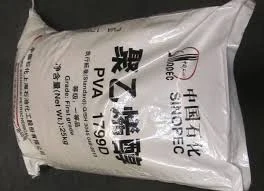Understanding Chemical Thickening Agents Composition, Function, and Applications
Chemical thickening agents play a crucial role in numerous industries, including food production, cosmetics, pharmaceuticals, and construction. They are substances that increase the viscosity of a liquid without substantially altering its other properties. This ability to alter viscosity without significant changes to other physical characteristics makes thickening agents invaluable for achieving desired consistency and texture in a wide range of products.
Composition of Thickening Agents
Thickening agents can be classified into two main categories natural and synthetic.
Natural Thickening Agents
Natural thickening agents, derived from plants or animals, are often preferred in food applications for their safety and health benefits. Common examples include
- Starch Extracted from corn, potatoes, and other sources, starch is widely used in the food industry as a thickener for sauces, soups, and puddings. - Gums Ingredients like xanthan gum and guar gum are polysaccharides that can swell and increase the viscosity of solutions. Xanthan gum is particularly popular in gluten-free baking, providing texture similar to that of traditional wheat products. - Pectin Often used in the production of jams and jellies, pectin is a natural carbohydrate found in fruits that helps to stabilize and add viscosity.
Synthetic Thickening Agents
On the other hand, synthetic thickening agents are man-made substances that provide specific benefits often not achievable with natural agents
.- Carbomers These synthetic polymers are widely used in cosmetics and personal care products for their ability to create a thickening effect and stabilize emulsions. - Cellulose derivatives Compounds like hydroxypropyl methylcellulose (HPMC) are primarily used in pharmaceuticals to thicken solutions and enhance texture in products like whipped creams.
Function and Mechanism of Thickening Agents
The primary function of a thickening agent is to increase the viscosity of a liquid. This process occurs through a mechanism that involves the interaction of the agent's particles with the liquid medium. When introduced into a solution, thickening agents absorb water, swell, and form a gel-like structure. This structure hinders the movement of liquid molecules, thereby increasing the solution's resistance to flow.
The effectiveness of a thickening agent can depend on several factors, including its concentration in the solution, temperature, and pH level. It's important for formulators to understand these parameters to achieve the desired texture and stability in their products.
chemical thickening agent

Applications Across Various Industries
The versatility of thickening agents allows for their application in numerous fields
Food Industry
In food production, thickening agents are essential for creating the right texture in various products. They help in stabilizing emulsions, improving mouthfeel, and enhancing the overall sensory experience of food. From salad dressings to ice creams, thickening agents ensure consistency and prevent separation of ingredients.
Cosmetics and Personal Care
In cosmetic formulations, thickening agents are critical in stabilizing creams, lotions, and gels. They provide a luxurious texture that enhances product performance and user experience. For instance, emulsions containing oil and water require thickening agents to maintain stability and prevent separation.
Pharmaceuticals
In the pharmaceutical industry, thickening agents are often added to liquid formulations to improve the viscosity of syrups and suspensions, making them easier to swallow and ensuring even distribution of active ingredients.
Construction
In construction, thickening agents are employed in paints, coatings, and adhesives to improve viscosity, reduce dripping, and enhance application properties.
Conclusion
As demonstrated, chemical thickening agents are vital components across a swath of industries. Understanding their compositions, mechanisms, and applications helps formulators create products that meet consumer expectations regarding texture and consistency. As industries continue to evolve, the demand for innovative and efficient thickening agents will remain pivotal for producing high-quality goods.
-
Rdp Powder: Key Considerations for Wholesalers in the Building Materials IndustryNewsJul.08,2025
-
Key Considerations for Wholesalers: Navigating the World of Hpmc - Based ProductsNewsJul.08,2025
-
Hpmc Detergent: Key Considerations for WholesalersNewsJul.08,2025
-
Key Considerations for Wholesalers: China Hpmc For Tile Adhesive, Coating Additives, Concrete Additives, and MoreNewsJul.08,2025
-
Crucial Considerations for Wholesalers: Navigating the World of Construction MaterialsNewsJul.08,2025
-
Key Considerations for Wholesalers Sourcing Additive For Cement, Additive For Concrete, Additive For Putty from Additive Manufacturer Shijiazhuang Gaocheng District Yongfeng Cellulose Co., Ltd.NewsJul.08,2025




